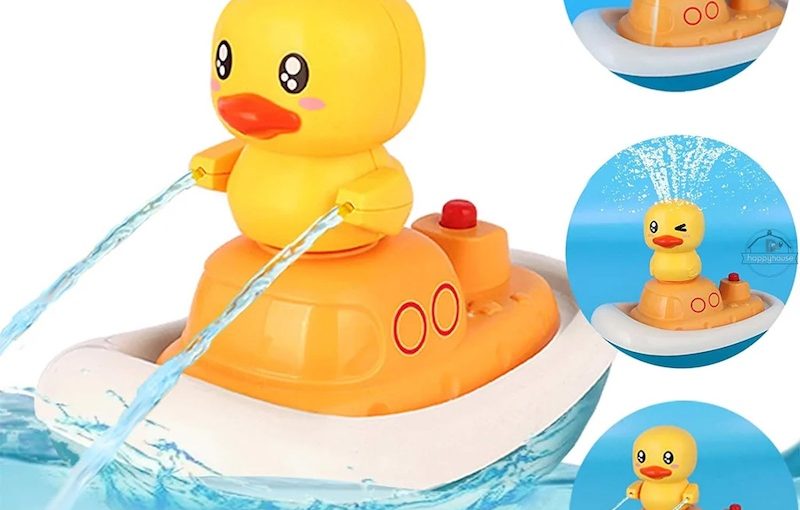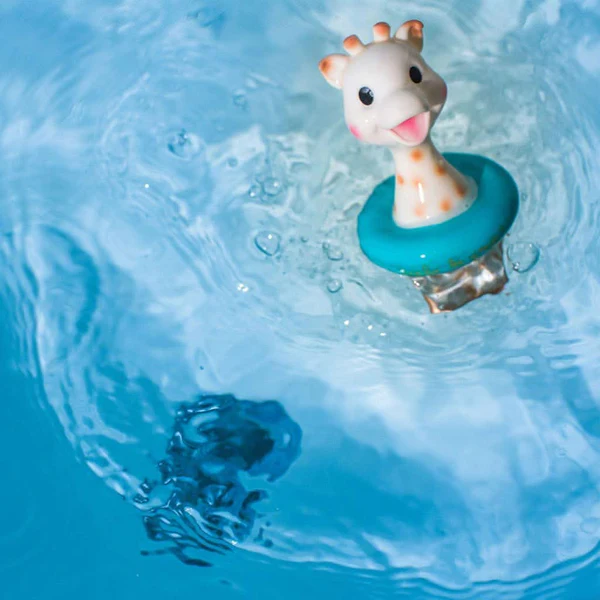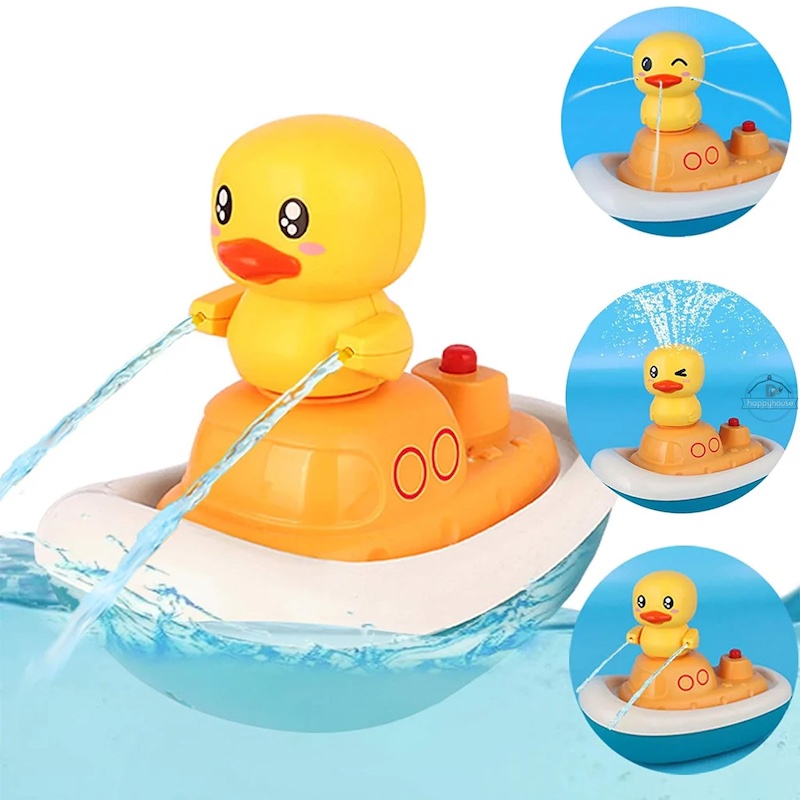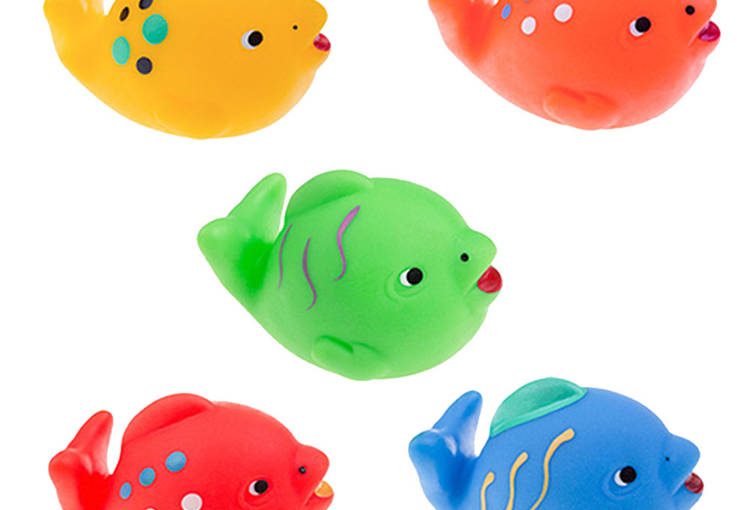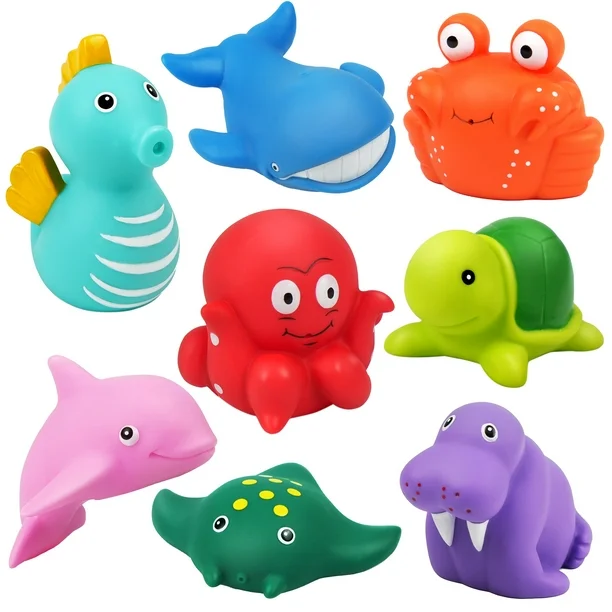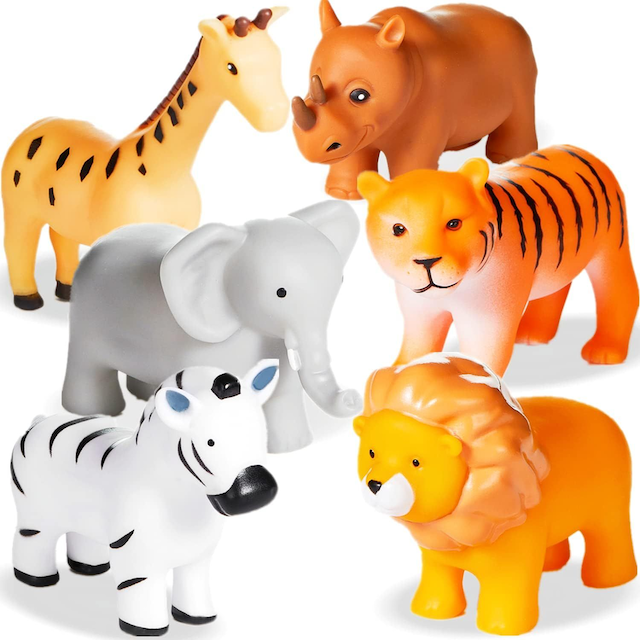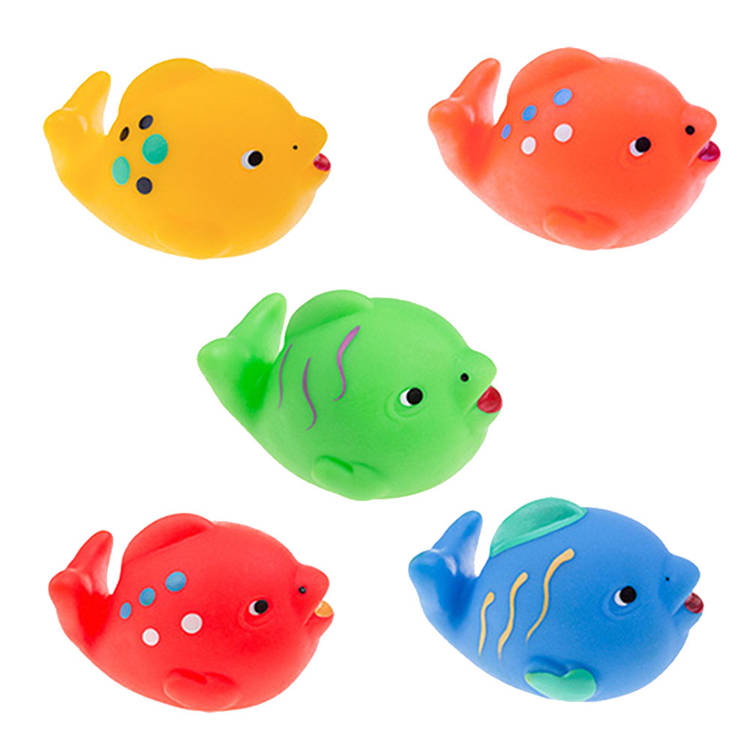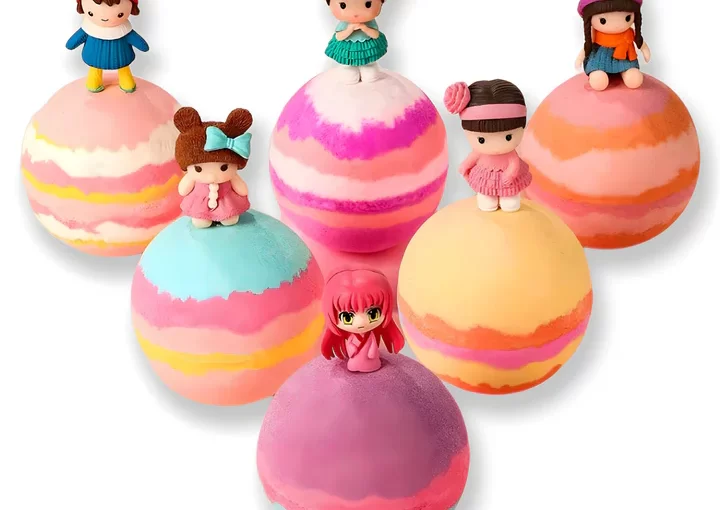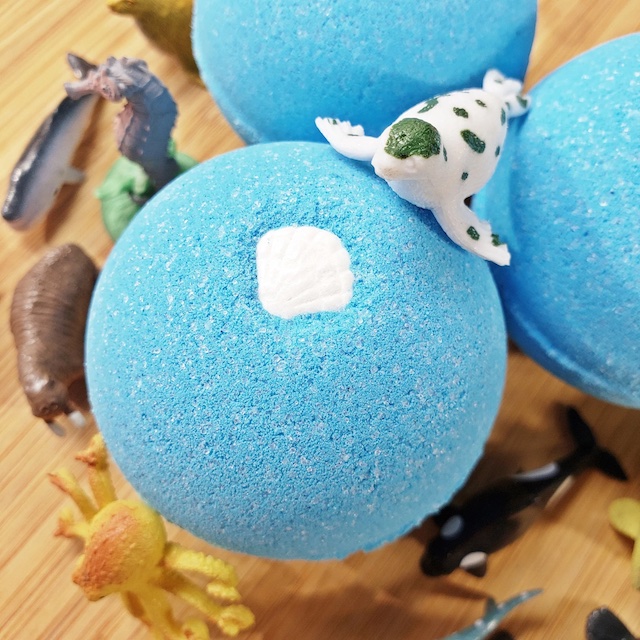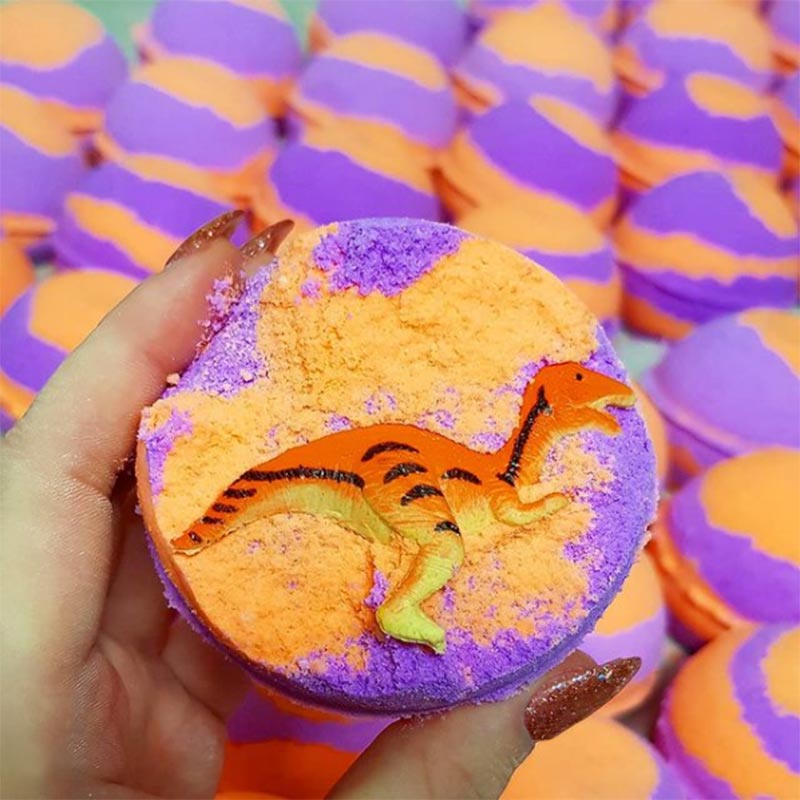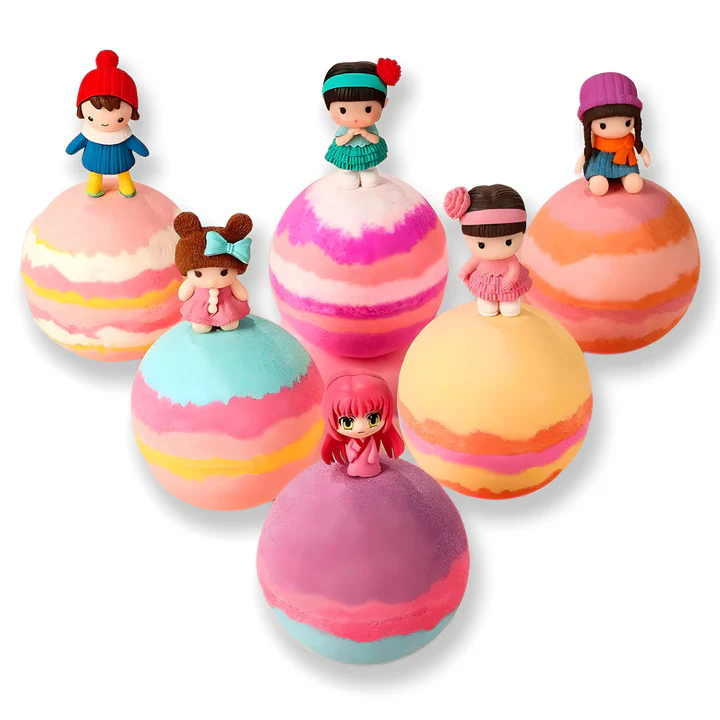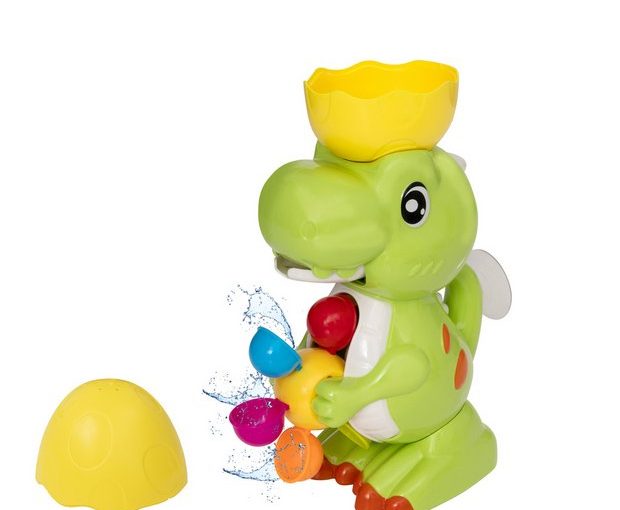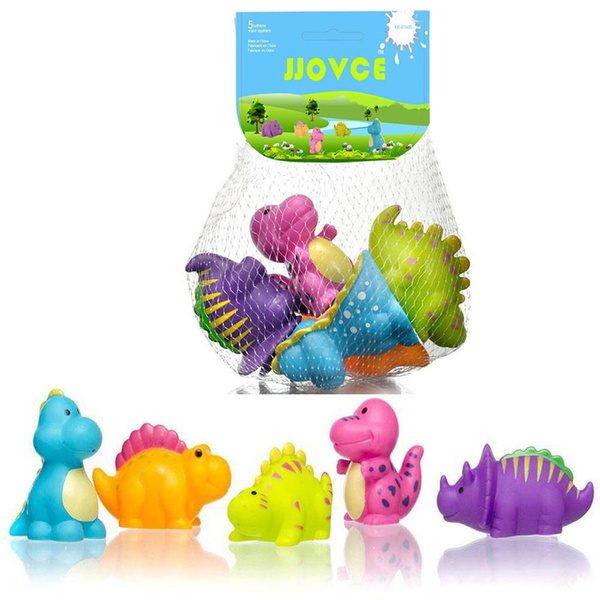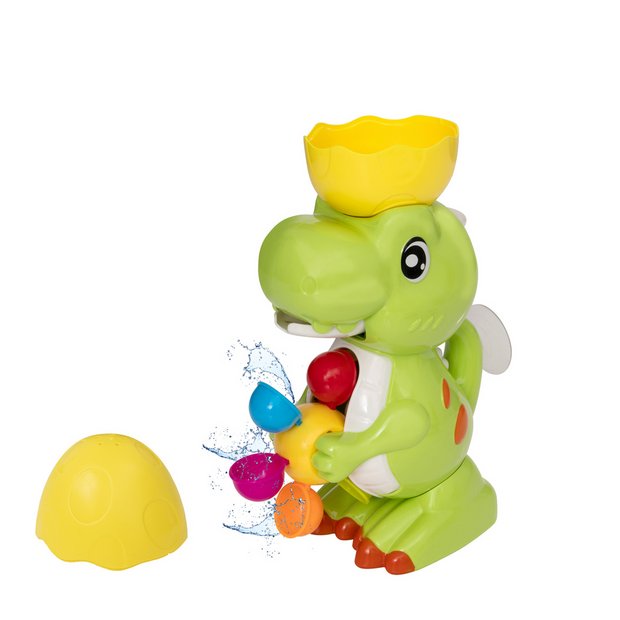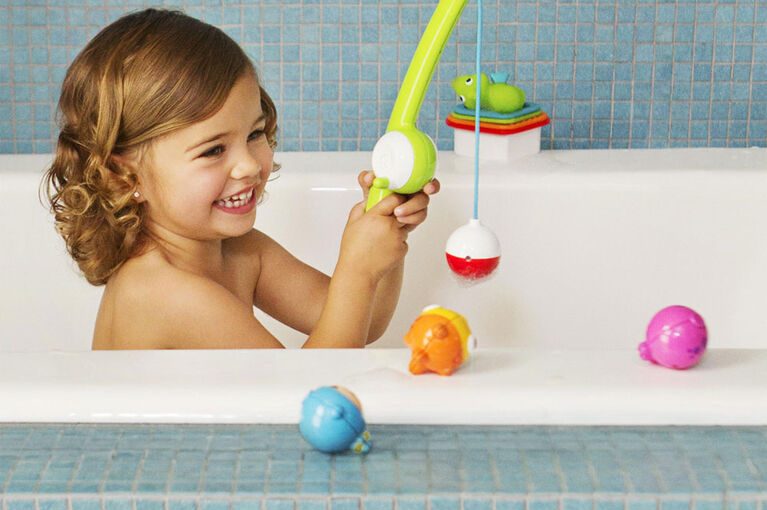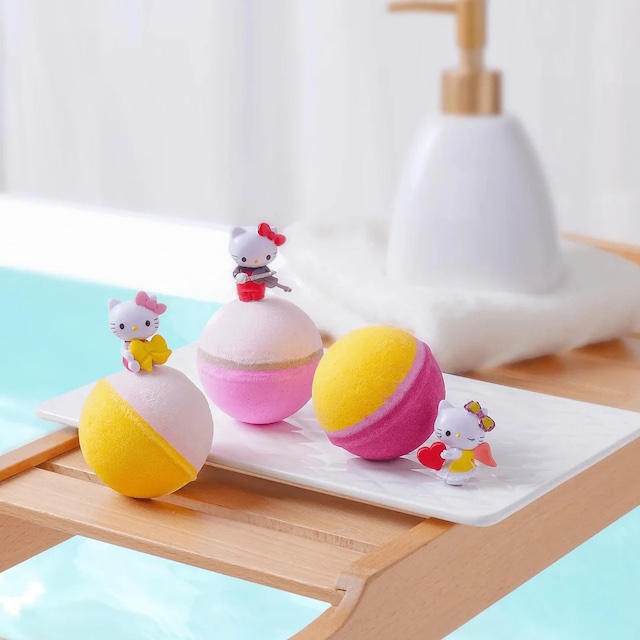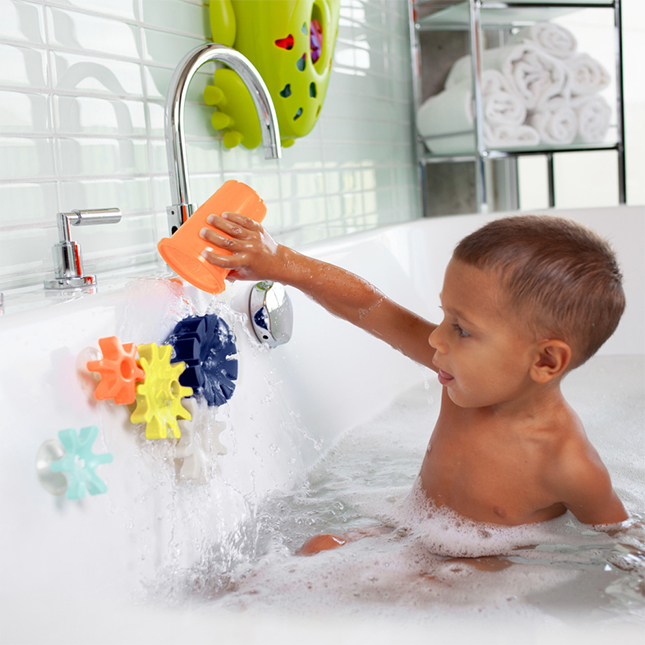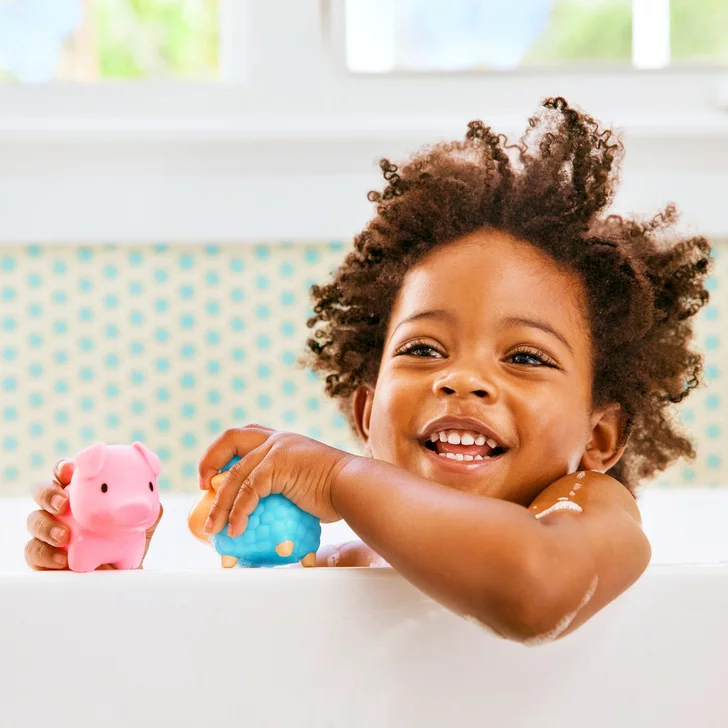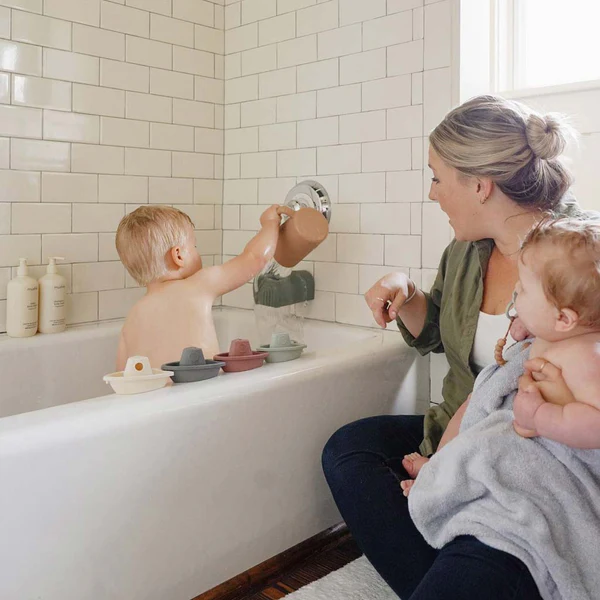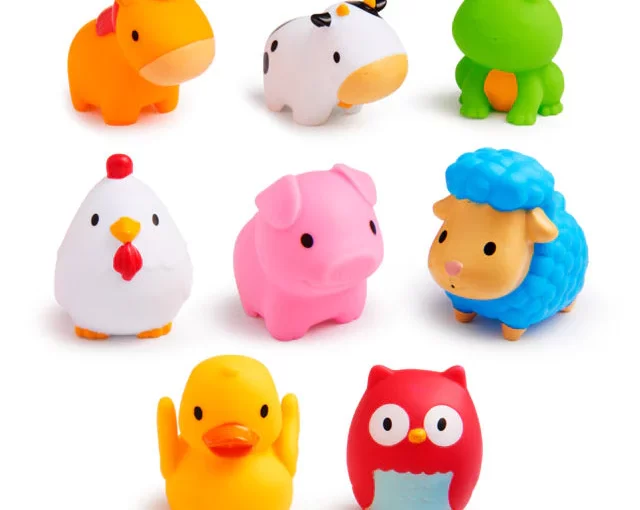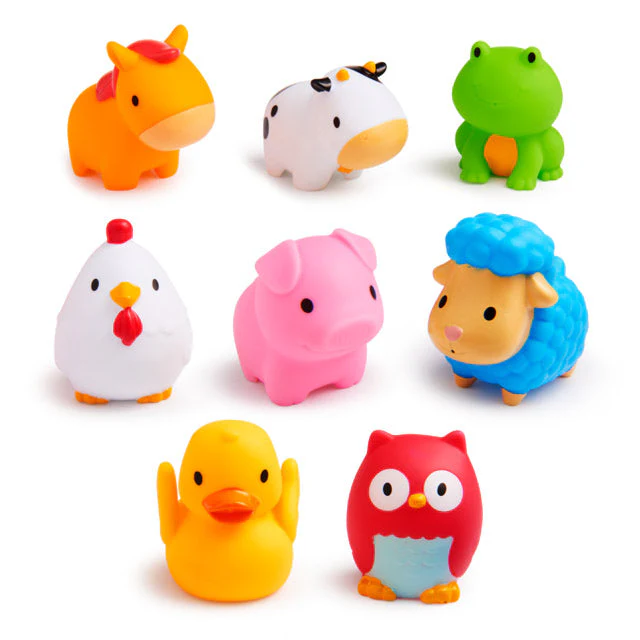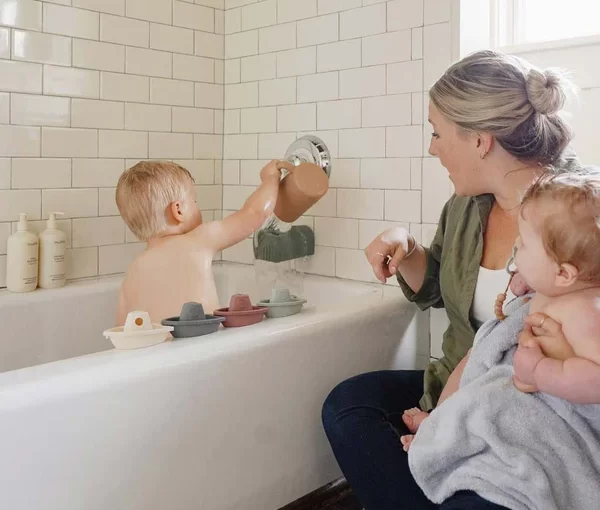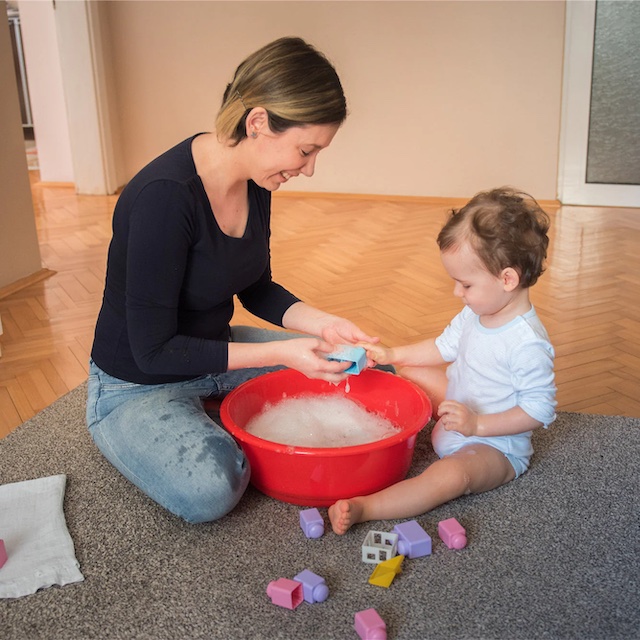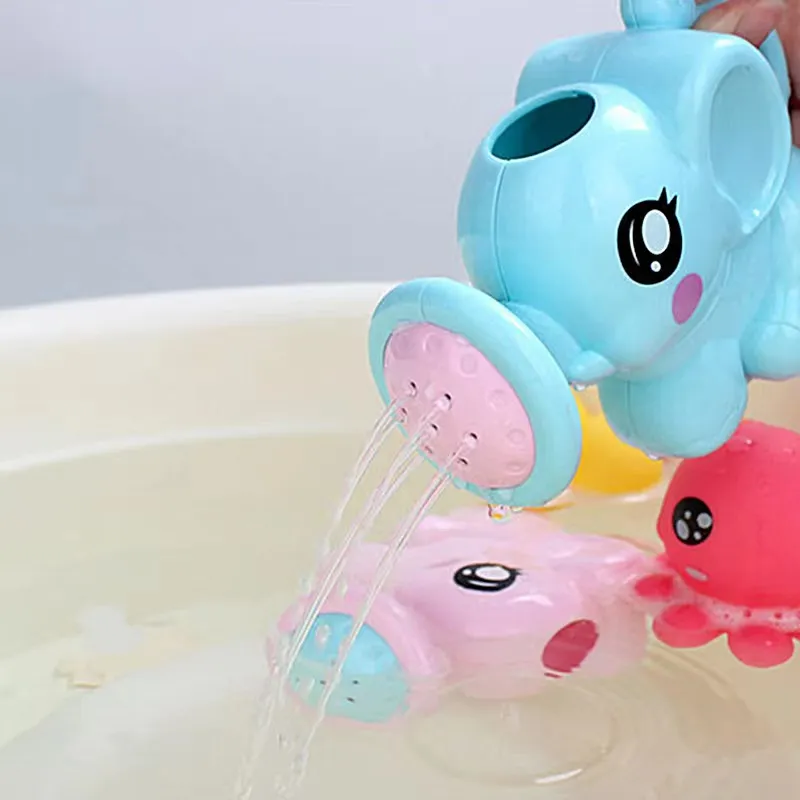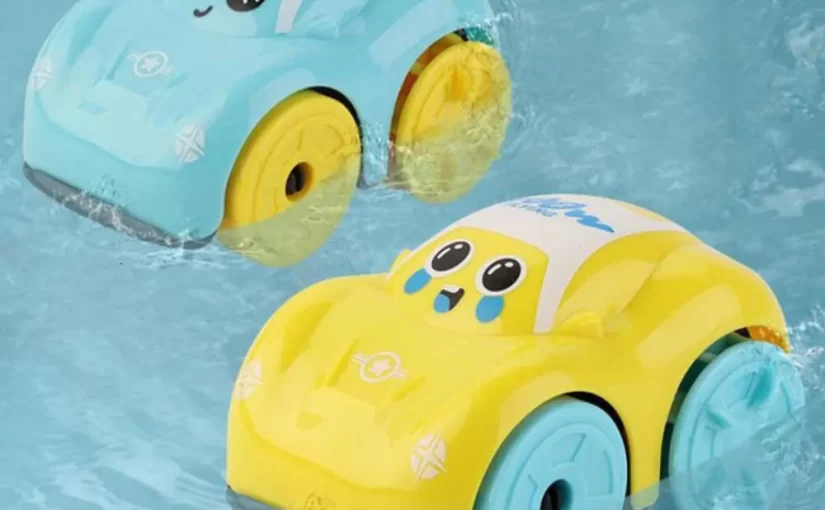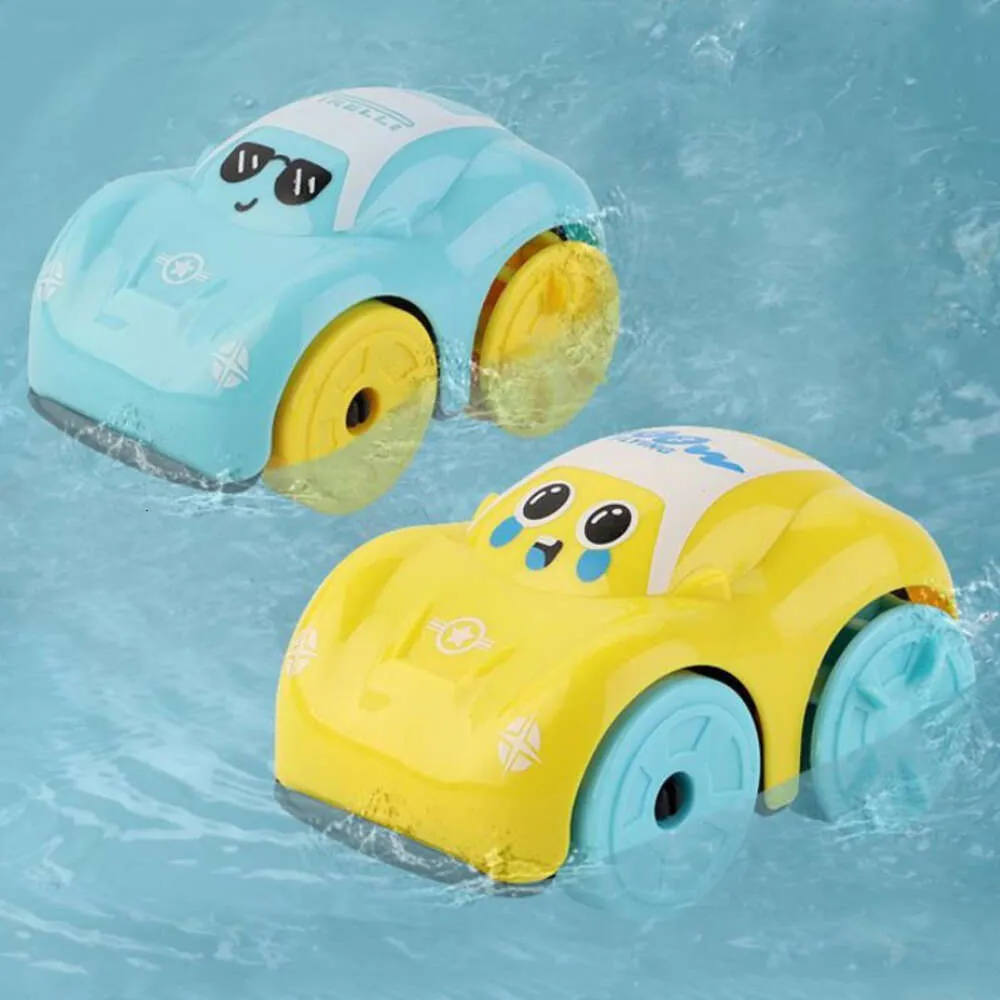The Benefits of Bath Time Play
Bath time isn’t just for getting clean. It’s a chance for kids to enjoy and learn. Adding boat bath toys can make this time even better. Here are some benefits:
Encourages Sensory Development
Boat bath toys offer textures and movements that kids can feel and watch. These sensory experiences are vital. They help little ones understand the world around them.
Boosts Coordination and Motor Skills
Playing with floating boats requires coordination. Kids must reach, grasp, and even balance toys on the water. These actions are great for developing motor skills.
Stimulates Imagination and Creativity
A simple bath can turn into an ocean adventure with the right toys. Boat bath toys let kids create stories and scenarios, firing up their imagination.
Teaches Cause and Effect
When children play with boat toys, they learn about cause and effect. They see what happens when boats tip over or when they push them underwater.
Offers a Relaxation Opportunity
For both kids and parents, bath time can be a relaxing routine. Floating boats can have a calming effect on children, making it easier to wind down before bedtime.
Provides Learning Moments
Boat bath toys often come in different sizes and colors. Parents can use them to teach kids about concepts like big and small, or red and blue.
Strengthens Family Bonds
Bath time is a chance for parents to engage with their children. Together with boat bath toys, family bonds grow stronger through play.
Incorporating boat bath toys into the routine benefits children greatly. This play enriches their bath time experience. Make sure to include these toys to turn each bath into a fun and educational moment.
Top Boat Bath Toy Picks for Children
Selecting the perfect boat bath toys can be a challenge with so many options available. Here’s a curated list to help you make the best choices for water play.
Colorful Sailboats
Sailboats with vibrant sails attract kids’ attention and make bath time visually stimulating. Look for ones that are easy to hold and float well.
Stackable Boats
Stackable boat sets encourage problem-solving as kids learn to balance and nest them. These also teach size and color recognition.
Wind-Up Motorboats
Wind-Up motorboats are great for teaching cause and effect. Kids wind them up and watch them zoom across the tub.
Bath Toy Sets with Characters
Sets featuring favorite characters turn bath time into storytelling time. They often come with boats and figures for role-playing adventures.
Rubber Ducks with Boats
Classic rubber ducks paired with small boats add a twist to a timeless bath toy. These combos are often a hit with the little ones.
Fountain Boats
Fountain boats that spray water can delight and surprise, offering a different sensory experience. Ensure the water mechanism is easy to use.
Choosing the right boat bath toys can enhance the bath time experience significantly. Remember, the best toy is one that’s not only engaging but also safe for your child.
Safety Tips for Bath Toys and Play
Ensuring safety during bath time is as critical as the fun. Here are some important tips to keep in mind when introducing boat bath toys to your child’s routine:
Choose Non-Toxic Materials
Always check that boat bath toys are free from harmful chemicals. Look for BPA-free, phthalate-free, and lead-free labels.
Check for Small Parts
Boat toys should be large enough to not pose a choking hazard. Avoid toys with detachable small parts.
Ensure Proper Supervision
Never leave your child unattended in the bath, even with toys that float. Active supervision is a must.
Keep Toys Clean and Mold-Free
Regularly clean boat bath toys to prevent mold build-up. Dry them thoroughly after each use.
Inspect Toys for Damage
Before play, inspect toys for any sharp edges or broken parts that could cause injury.
Avoid Toys That Trap Water
Select boat bath toys that don’t trap water, as these can become breeding grounds for bacteria.
Test Water Temperature
Before introducing toys, make sure the bath water is not too hot. Use a bath thermometer for accuracy.
Use Slip-Resistant Mats
To prevent slips and falls, place a slip-resistant mat in the tub during bath time.
By keeping these safety tips in mind, boat bath toys can provide a fun and hazard-free water play experience for your child.
Interactive Boat Toys for Educational Play
Interactive boat bath toys are not just for fun. They play a key role in a child’s learning. These toys can help kids grasp new concepts through play. Here are some kinds of interactive boat toys that support educational play:
Bath Boats with Removable Parts
Boats with parts kids can take apart and put back together aid in problem-solving. They also teach about shapes and fitting pieces in the right places.
Boats with Figures and Accessories
Adding characters to boat toys invites role-play. This kind of play helps kids with language and social skills.
Musical and Light-Up Boats
Boats that make sounds or light up captivate kids. They introduce the ideas of cause and effect and stimulate auditory and visual senses.
Boats with Water Pumps
Toys that let kids pump or squirt water teach about force and motion. Kids learn how their actions can control the toy’s function.
Educational Boats with Numbers and Letters
Some boat toys come with numbers and letters. They help kids recognize symbols and start understanding basic math and reading concepts.
Interactive boat bath toys can transform bath time into a rich learning experience. They don’t just entertain. They build skills that kids will use throughout their lives. When choosing boat bath toys, consider those that challenge and engage your child’s growing mind.
How to Choose the Best Boat Bath Toys
Choosing the best boat bath toys involves several factors. Here’s what to consider:
Assess Your Child’s Interests
Know what your child enjoys. Do they love colorful toys or prefer ones with characters? This will guide your selection.
Consider Age Appropriateness
Pick toys that match your child’s age group. Younger kids might need larger, simpler boats. Older children may enjoy more complex features.
Look for Educational Value
Go for boat bath toys that offer learning. Toys with numbers, letters, or puzzles can be educational as well as fun.
Check for Safety
Ensure toys meet safety standards. They should be non-toxic and without small parts that could be a choking hazard.
Prioritize Durability
Choose toys that are well-made and will last. Durable toys won’t break easily, ensuring long-term enjoyment and safety.
Opt for Easy-to-Clean Options
Select toys that are simple to clean and dry. This helps prevent mold and keeps playtime hygienic.
Balance Quality and Price
Find boat bath toys that offer the best value. Quality doesn’t always have to come at a high price.
By keeping these points in mind, you can select boat bath toys that are safe, engaging, and suitable for your child.
Maintenance and Care for Your Boat Bath Toys
Maintaining your boat toys is crucial to ensure they remain safe, clean, and fun for your child. To help your toys last longer and stay hygienic, here are practical tips for their care.
Cleaning and Disinfecting
Regular cleaning is essential. Use warm soapy water to wash the toys after each bath. For a deeper clean, soaking them in a vinegar solution can help disinfect them.
Drying to Prevent Mold
After cleaning, dry the toys thoroughly. Water can lead to mold and bacteria growth. Avoid this by squeezing out all moisture and laying toys on a towel to air dry.
Storing Toys Properly
Store boat bath toys in a well-ventilated area. A toy net or hanging organizer works well. It allows air to circulate and keeps toys dry between uses.
Checking for Damages
Inspect toys regularly for any signs of wear and tear. Dispose of toys with cracks or broken pieces to prevent injuries.
Safe Use Practice
Teach children proper toy use. Encourage them not to chew on boat bath toys. Besides being a choking hazard, it can damage the toys.
Follow Manufacturer’s Instructions
Check the manufacturer’s guidelines for care. Some toys may have specific instructions for cleaning or storage that ensure their longevity.
By taking good care of your boat toys, you extend their life and make bath time consistently enjoyable. Proper maintenance also supports the overall safety of your child’s play environment.
The Role of Boat Bath Toys in Child Development
Boat bath toys do more than just entertain. They play an essential part in child development, which is why choosing the right types is important. Here’s how these playful tools benefit kids as they grow.
Enhance Cognitive Skills
Playing with boat bath toys can improve cognitive skills. They help tots understand floating and sinking concepts. Children learn sizes and shapes by comparing different boats.
Develop Emotional Intelligence
Bath time with boats can be soothing. It helps young ones manage feelings and enjoy alone time. They learn patience when waiting for boats to move.
Improve Language Abilities
Talking about their boat adventures aids in language development. Kids pick up new words and ideas as they play. They express thoughts and stories about their bath time voyages.
Grow Social Skills
Playing with these toys often involves sharing and taking turns. Siblings or friends using boat bath toys together learn cooperation. This fosters social interactions and teamwork.
Promote Independence
Children can play with boats on their own in the bath. This independent playtime encourages self-reliance and confidence. Kids feel proud when they navigate boats successfully.
Boat bath toys thus offer numerous developmental advantages. They’re not just bath time fun, they are tools for growth. Be mindful of these roles when you pick out boat bath toys for your little ones.
Popular Themes and Characters for Boat Bath Toys
When it comes to boat toys, certain themes and characters stand out. They capture kids’ imaginations and make bath time a rich, story-filled adventure. Here are some of the popular themes and characters that children adore.
Classic Maritime Adventures
Themes like pirates, treasure islands, and fisherman boats are timeless. These toys spark stories of high seas and buried treasure. They’re perfect for little explorers.
Favorite Cartoon Characters
Boats featuring well-known cartoons are a hit. Characters from shows like ‘Paw Patrol’ or ‘Peppa Pig’ sailing on their boats can be a blast. Kids love to recreate scenes from their favorite episodes.
Educational and Learning-Themed Boats
Some boat toys come decked with alphabets or animal figures. These help kids learn while they play. They can spell words or identify animals, which is both fun and educational.
Fantasy and Fairy Tale Boats
Magical themes, with mermaids or fairy-tale creatures, transport kids to another world. They can imagine fantastical voyages and adventures. This is great for their creativity.
Occupations and Roles
Boat toys can mimic real-life roles like firefighters or coast guards. Kids can role-play and learn about different jobs on the water. Such playsets often include boats, characters, and related accessories.
Space and Science Fiction
Spaceships that double as boats bring a sci-fi angle to bath time. They encourage children to think about space and technology. This theme is popular among young astronauts-to-be.
When picking out boat toys for your child, consider these themes. Choose ones that align with their interests and watch their bath time stories come alive. Remember, high-quality boat bath toys can inspire play, learning, and growth.
